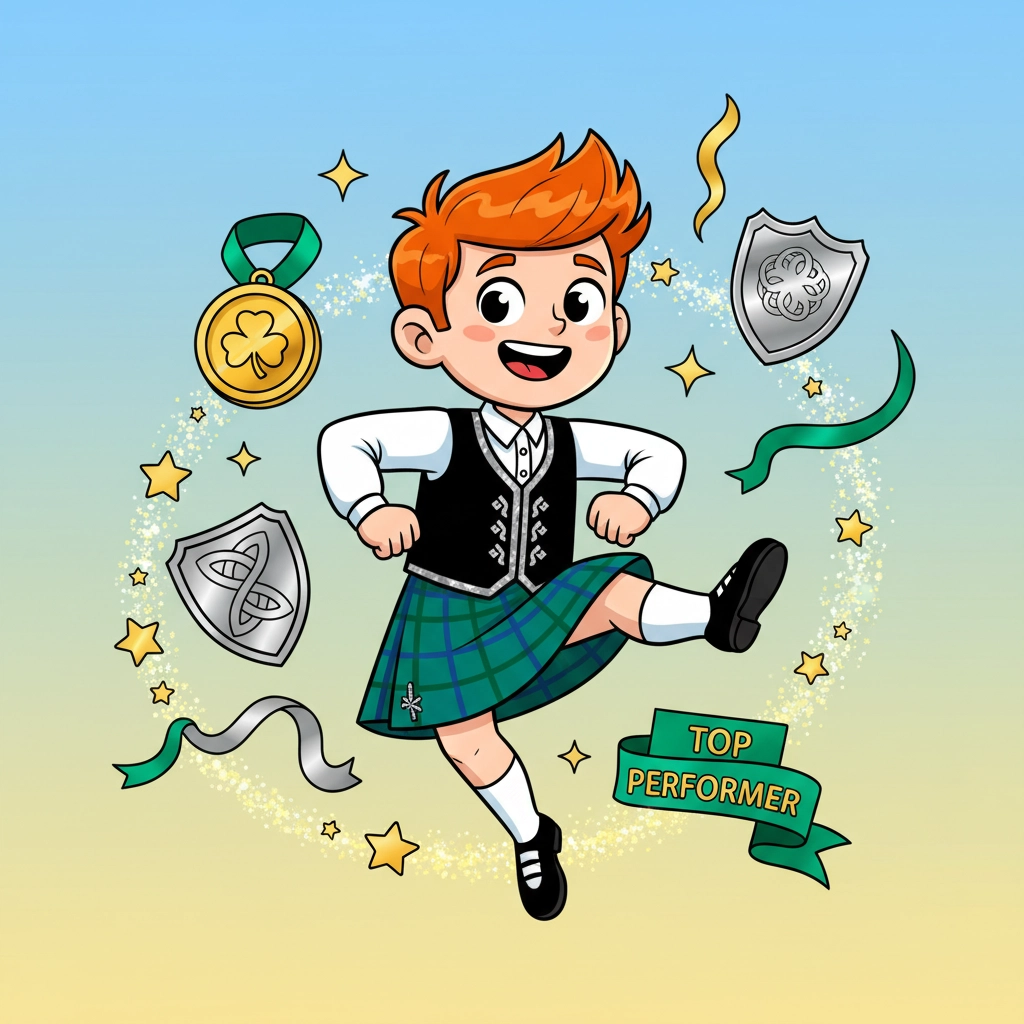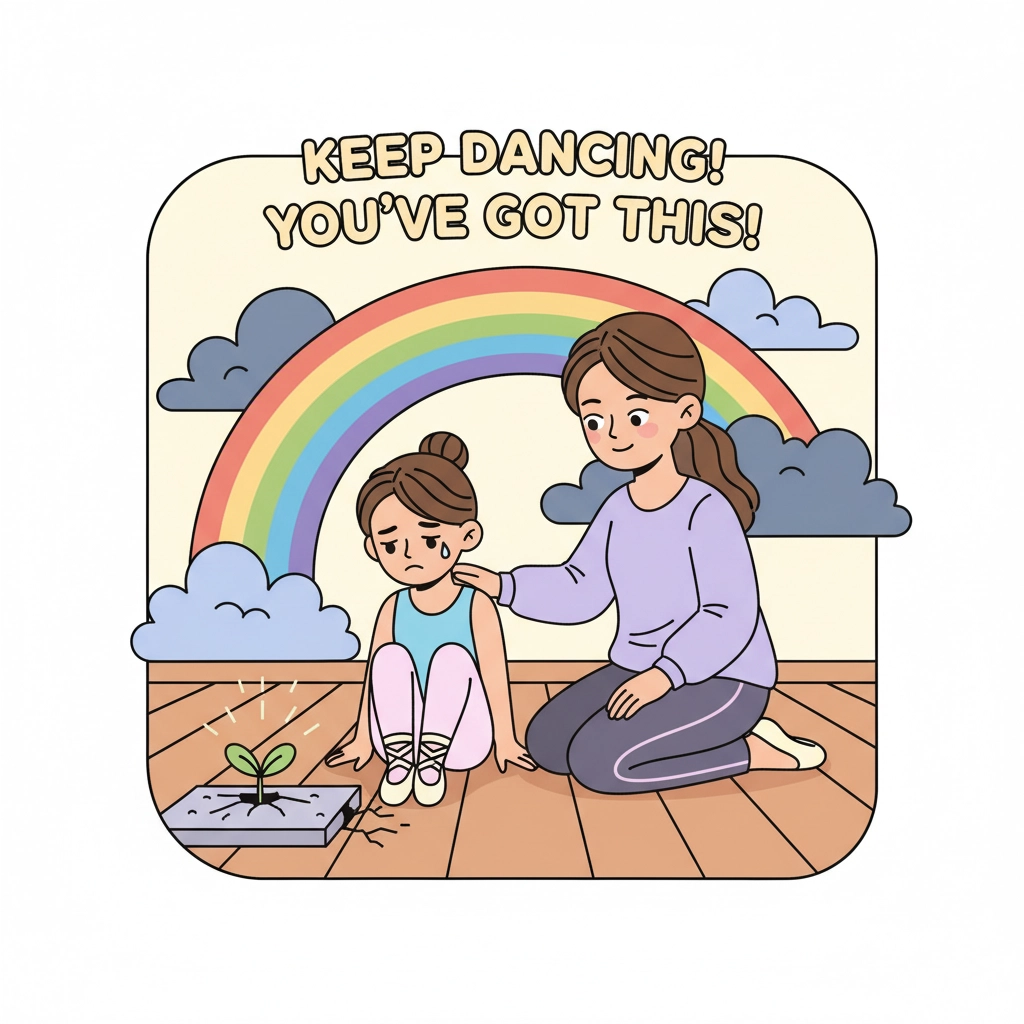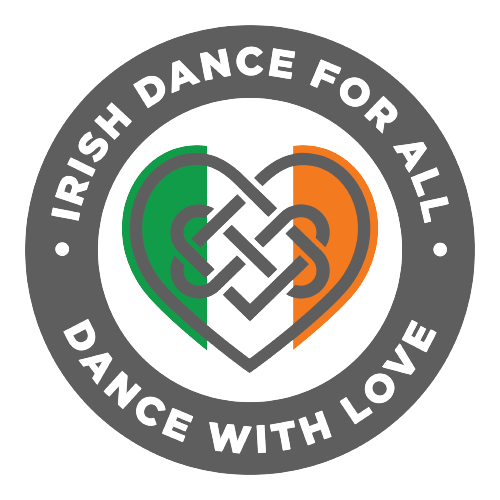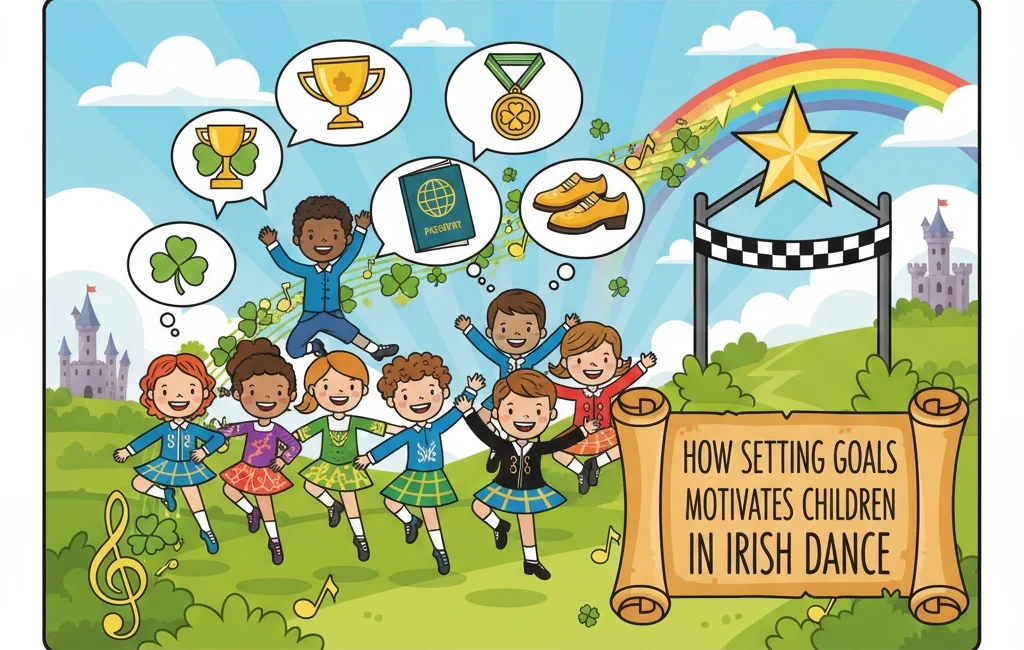Getting kids excited about Irish dance can be a challenge. One day they're bouncing around the living room practicing their treble jigs, and the next they're dragging their feet to class. The secret to keeping that spark alive? Goal setting.
Setting goals gives children something concrete to work toward. It transforms practice from "something I have to do" into "something I want to achieve." When kids have clear targets in their Irish dance journey, they stay motivated, build confidence, and develop skills that go far beyond the dance floor.
Goals Give Kids Direction
Think about it – without goals, practice can feel pretty aimless. Kids show up, run through some steps, and leave. But when they have specific targets, everything changes. Goals act like a roadmap, showing young dancers exactly where they're heading.
Instead of just "getting better at Irish dance," kids can focus on mastering a particular reel, improving their posture, or learning a new set dance. This clarity makes practice sessions more purposeful. Kids know what to work on and why it matters.

Goals also help children manage their time better. When they understand what they're working toward, they can prioritize their practice. They'll spend more time on the steps that need work and celebrate when they nail the ones they've been struggling with.
Making Goals Achievable Keeps Kids Coming Back
The magic happens when goals are just the right size – challenging but doable. Big goals like "win the regional championship" can feel overwhelming for a young dancer. But smaller goals like "land five treble jigs in a row" or "keep my arms steady during an entire reel" feel manageable.
These bite-sized achievements create a positive cycle. Kids work toward a goal, achieve it, feel proud, and then set another one. Each small win builds momentum for the next challenge.
Breaking larger goals into smaller steps also prevents frustration. Learning a full set dance might take months, but mastering the first eight bars can happen in a week or two. These quick wins keep kids engaged while they work toward bigger achievements.
Building Confidence One Step at a Time
Every goal achieved is proof that hard work pays off. When kids set a target and reach it through practice, they learn they can improve through effort. This builds genuine confidence – not the kind that comes from being told "you're great," but the kind that comes from actual accomplishment.

This confidence extends beyond dance class. Kids who learn to set and achieve goals in Irish dance often apply these skills to school, sports, and other activities. They develop a growth mindset – the belief that abilities can be improved through practice and dedication.
Goal achievement also teaches kids to separate their worth from their performance. They learn that not hitting a goal doesn't make them failures – it just means they need more practice or a different approach.
The SMART Way to Set Dance Goals
The SMART goal framework works perfectly for young Irish dancers. Here's how to apply it:
Specific: Instead of "get better at hard shoes," try "master the basics of treble jigs."
Measurable: "Complete 10 treble jigs without stopping" gives kids a clear target to hit.
Achievable: Goals should stretch kids without breaking them. A beginner aiming to learn a championship-level dance in a month isn't realistic.
Relevant: Goals should connect to what kids actually care about. If they love reels, focus on reel-related goals.
Time-bound: "Learn the first half of St. Patrick's Day by next month" creates urgency and helps kids track their progress.
Tracking Progress Keeps Motivation High
Kids need to see their improvement to stay motivated. Tracking progress makes abstract concepts like "getting better" concrete and visible.
This can be as simple as keeping a practice journal where kids note what they worked on and what improved. Or it could be recording short videos to compare their dancing from week to week.

Regular check-ins with goals help kids adjust their targets as needed. Maybe a goal was too easy and needs to be more challenging. Or perhaps it was too ambitious and needs to be broken down further. These adjustments keep goals relevant and motivating.
Progress tracking also provides talking points between parents and kids, or students and teachers. Instead of "How was dance class?" conversations can focus on specific achievements and next steps.
Dealing with Setbacks and Building Resilience
Not every goal will be met on schedule, and that's okay. Learning to handle disappointment and setbacks is just as important as celebrating successes.
When kids don't achieve a goal, it's an opportunity to analyze what happened. Maybe they needed more practice time, or the goal was too ambitious, or they discovered they needed to work on fundamentals first.
This process teaches resilience – the ability to bounce back from disappointment and keep trying. Kids learn that setbacks are temporary and that persistence pays off.

Teaching kids to be kind to themselves during this process is crucial. Self-compassion – treating themselves with the same kindness they'd show a friend – helps kids stay motivated even when things don't go as planned.
Practical Tips for Parents and Teachers
Start with goal-setting conversations. Ask kids what they want to achieve in their Irish dance journey. Listen to their answers and help them shape realistic targets.
Make goals visible. Write them down, put them on the fridge, or create a goal chart. Visual reminders keep targets top of mind.
Celebrate achievements, no matter how small. Recognition reinforces the value of goal setting and motivates kids to set new targets.
Involve kids in the goal-setting process. Goals they choose for themselves are more motivating than goals imposed by adults.
Be flexible. As kids grow and improve, their goals should evolve too. What excited them as beginners might not motivate them as intermediate dancers.
Creating Lifelong Learners
Goal setting in Irish dance does more than improve technique – it creates lifelong learners. Kids who learn to set targets, work toward them, and evaluate their progress develop skills that serve them throughout their lives.
They learn that improvement comes through deliberate practice, not just natural talent. They discover that challenges are opportunities to grow, not threats to avoid. Most importantly, they develop the confidence that comes from knowing they can achieve what they set out to do.
These lessons extend far beyond the dance studio. Kids who learn goal setting through Irish dance often become more organized students, more persistent athletes, and more resilient adults.
The key is starting small, celebrating progress, and keeping the focus on personal growth rather than comparison with others. When kids learn to set and achieve their own goals in Irish dance, they're learning skills that will benefit them for life.
Whether your child dreams of competing at the highest levels or just wants to have fun while staying active, goal setting can help them get the most out of their Irish dance experience. Start with one small, specific goal and watch as your young dancer builds the confidence and motivation to tackle bigger challenges ahead.

